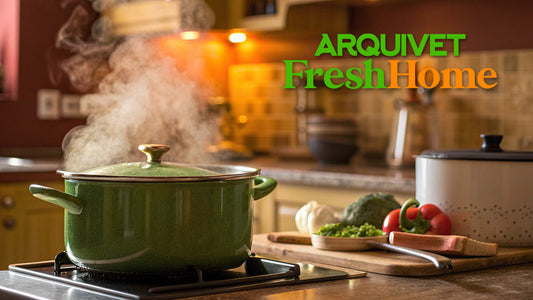
Wet dog food: Is it better or worse than kibble?
Feeding our most faithful companion requires our full attention. We must provide them with the right food to provide all the nutrients they need for each stage of their life.
The variety of dog food we encounter today can leave us with many doubts when it comes to choosing. On the other hand, the sheer number of brands and the attractiveness of their packaging make the task even more complicated.
Among all this sea of brands and varieties, dog food is divided into two types: dry food and wet food. Both have their fans and detractors, but the truth is that both have advantages and disadvantages that we must take into account when choosing.
Below, we'll explain the differences between wet food and dry food, their advantages and disadvantages, and which option is best.
Wet food and dry food: What's the difference?
As its name suggests, wet dog food contains a higher proportion of water than dry food, specifically between 60% and 84%. This is its most obvious difference: its composition.
This also creates differences in the product's durability and, of course, its affordability. Dry food will last much longer than wet food, not only because of its composition but also because of its packaging. Dry food packs usually come with closures designed to preserve the food's freshness, while cans of wet food sometimes lack these closures.
On the other hand, the energy intake between the two also varies. Our dog will get the necessary energy with just a small amount of dry food, whereas if we want to provide the same amount of energy with wet food, we'll need to give him at least double the amount.
Advantages and disadvantages of wet food compared to kibble
The wet dog food It is especially recommended for those who may have dental problems, either due to advanced age or any other problem they may have developed, such as tooth loss. In fact, it not only contributes to an effortless bite, but also improves digestive processes. However, due to its low content of other elements that promote bowel movements, it can also cause constipation.
For dogs who suffer from allergies or have special needs, wet food is also suitable, as we can find the most suitable food, designed for each situation.
One of the great advantages of wet food over dry food is that it prevents obesity. Its high protein content compared to its low carbohydrate content helps prevent this disease.
Its high water content will be very beneficial for dogs that don't drink much throughout the day, providing extra hydration. As for puppies, wet food is very attractive due to its scent. Palatability is also a key factor for our pets. In this sense, dogs with problems related to anorexia or hyporexia will become interested in food again given the intense scent of wet food. Thus, its appetizing aroma will make it easier for even the most fussy eaters. But be careful not to over-accustom your dog if he's picky about food, because if you replace his wet food ration with dry food one day, he may show resistance and not eat it.
However, wet food is not recommended for dogs that eat too quickly or excessively. Dry food forces them to chew, which strengthens their teeth and delays food intake. Furthermore, wet food is linked to dental problems because, as a soft food, it contributes to the formation of tartar and other oral diseases.
On the other hand, and as we mentioned above, the amount of dry food needed for adequate energy intake is considerably lower than its equivalent wet food. This factor makes dry food a more economical choice compared to wet dog food. On the other hand, if we buy cheap wet food, we'll likely end up with low-quality food lacking the nutrients our pet needs.
Another of the great advantages of dry food over wet food is the wide variety available on the market and the progress in quality that has been achieved. However, it's true that such variety is also being achieved in wet dog food.
So what is the best option?
As we know, life isn't all black and white. Combining dry and wet food can be one of the best solutions. Of course, always monitor the resulting energy intake to ensure it doesn't exceed your dog's needs. It's the perfect combination of intense scent and hydration, along with chewing exercise.
Furthermore, some experts believe that using only one type of food or the other isn't 100% effective. That's why alternating both types of food is one of the best options when it comes to ensuring proper nutrition for our dog. It provides a perfect balance between the quality of the food and the nutrients it provides. This way, we'll also provide our pet with a varied daily menu, as opposed to the routine of dealing with dry food every day.
In either case, whether we opt for the dry or wet variety, our main goal is to ensure that it is of the highest quality and adapted to our dog's age, lifestyle, and condition. At Arquivet, we offer a wide variety of products that will ensure proper nutrition and palatability for our most loyal companions. Natural foods, free of chemicals and substances harmful to their health, will be ideal for our dog to grow up healthy and happy.


